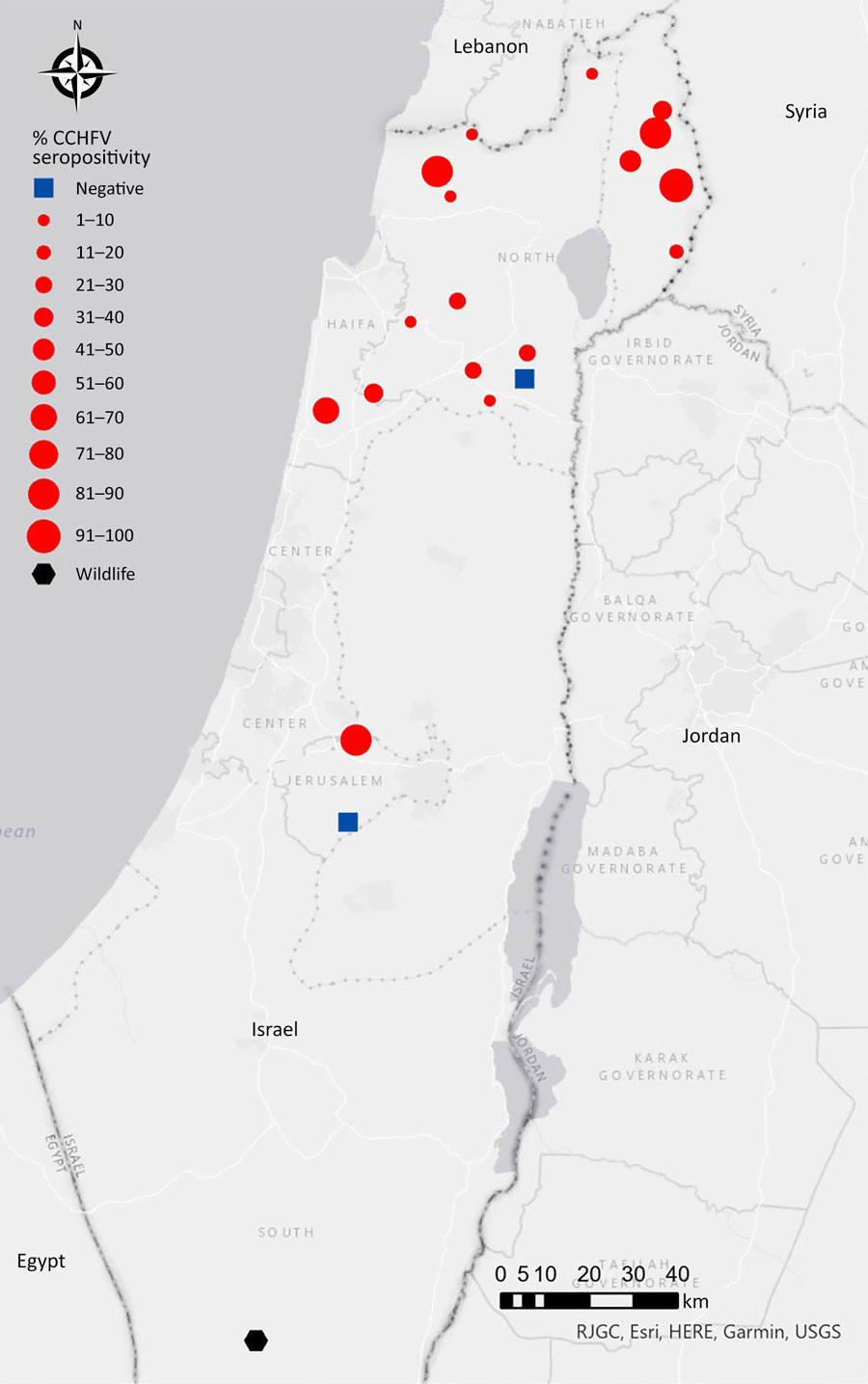Volume 31, Number 11—November 2025
Research Letter
Crimean-Congo Hemorrhagic Fever Virus in Cattle and Ticks, Israel
Figure

Figure. Distribution of samples seropositive for CCHFV in study of serologic and molecular evidence of CCHFV in cattle and ticks, Israel, April 2024–February 2025. Red dots represent seropositive beef cattle herds. Size of dots correlates with percentage of CCHFV seropositivity. Blue rectangles represent CCHFV seronegative herds. Black hexamer represents 2 of 200 CCHFV seropositive wild animals that were tested. Map created by using ArcGIS software (Esri, https://www.esri.com). CCHFV, Crimean-Congo hemorrhagic fever virus.
Page created: September 30, 2025
Page updated: December 10, 2025
Page reviewed: December 10, 2025
The conclusions, findings, and opinions expressed by authors contributing to this journal do not necessarily reflect the official position of the U.S. Department of Health and Human Services, the Public Health Service, the Centers for Disease Control and Prevention, or the authors' affiliated institutions. Use of trade names is for identification only and does not imply endorsement by any of the groups named above.